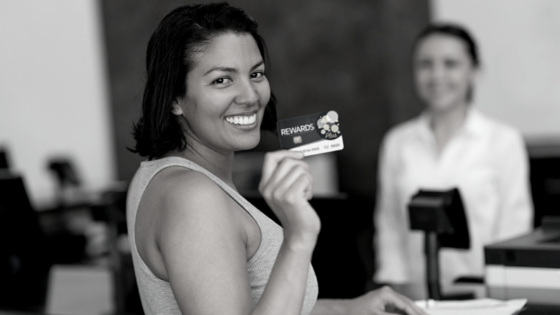It’s no secret that the marketplace in 2022 presents a real challenge for many brands. We’re living through a time of low consumer confidence that’s being driven by a range of ongoing geopolitical factors such as the conflict in Ukraine and resulting food and energy crises, the rising cost of living, the COVID-19 pandemic, and the looming spectre of yet another recession.
These are all strong factors that are making consumers think twice when considering a purchase and many are ultimately deciding to tighten their budgets rather than spend what disposable income they have. As a result, brands are starting to feel the pressure.

But even in shrinking markets, businesses can achieve growth by waking up habitual shoppers and leveraging their brands to convince consumers to choose their product over other expenditures.
But, in order to thrive in this environment, brands must prioritise the building of emotional connections with consumers — with the ultimate goal of inspiring loyalty. Like battening down the hatches before a storm, fostering a loyal base of customers can help to protect your business against difficult times ahead.
Even if rival brands lower their prices or offer your customers enticing deals and discounts, loyalty can stop them from jumping ship. If a consumer happens to have a bad experience with your brand, loyalty can help them forgive and forget. When logic tells them to shop around, loyalty will tell them to stay true to your brand. Indeed, loyalty is a rare and valuable thing worth investing in.
But how exactly can a brand build loyalty with its customers? The answer is to make your brand customer-centric and focus on the emotional connection between it and your target audience.
Remodelling Your Brand Around Your Customers
Even before the current cocktail of troubles was mixed together, customer acquisition costs were rising and pushing brands away from the acquisition-focused business models made possible by the expansion of internet use and e-commerce.
With that expansion now substantially slowed and fewer new consumers out there for brands to attract, customer centricity has become more and more popular. This doesn’t mean abandoning acquisition altogether, but rather building your business model around retention and securing repeat customers, who are 67% more likely to spend more than first-timers.
As technology continues to improve, a customer-centric approach that focuses on improving retention and LTV (Lifetime value) offers myriad options and strategies for brands to pursue. Marketers can track a range of different data points and build increasingly granular segments to offer more relevant marketing content — while also relying on automation and AI to deliver highly personalized customer journeys.
It’s now entirely possible for two different customers to have vastly different experiences with the same brand — each tailored to fit their needs, interests, and buying habits. What’s more, the technology that enables this keeps improving.
Despite a range of helpful tools, building a customer-centric model, designed to inspire loyalty, can still be a tall order. Unlike a purely acquisition-focused approach, all customer touchpoints are important — even those that come after transactions. In order to get it right, it’s important to reassess how your brand fits into your customers’ lives and then rebuild your offering around that.
In order to succeed at this task, market research and brand tracking are vital, as they offer you insights into consumer behaviour and can show you how your brand is currently being perceived by your target audience. You can use tools like these, as well as your own customer data, to take a deep dive into what your target audience is looking for — what their likes, dislike, pain points, and needs are. Then, using this data, you can tailor your brand experience to meet — if not exceed — their expectations.
If you do it right, this will naturally build loyalty over time and the rewards for this can be huge — companies that have a customer-centric, data-driven marketing and sales platform improve marketing ROI by 15-20% or more.
And remember that the brand experience starts from the moment consumers discover your company, from their very first visit to your website, all the way to making a purchase and beyond — including customer support. Every step is important in creating a strong consumer/brand relationship.
Building A Successful Customer Loyalty Program
Another useful tool for building loyalty is by investing in a loyalty program. These can serve different purposes depending on the nature of your brand — whether it’s offering rewards in exchange for user-generated content and promotion or creating incentives to drive target consumers to purchase more and become more loyal.
Regardless of what form your loyalty program takes, there are some sure-fire ways of improving its effectiveness.
1. Use Emotions to Deepen Your Program’s Meaning
Loyalty programs obviously serve a commercial function but they are based upon deeper human connections. When consumers are loyal to a particular brand, it’s probably because they’ve developed an emotional connection.
So, feel free to use your loyalty program to help deepen that bond — make it feel like an exclusive club, a community, or even a family. Think about what you are empowering your customers to do now that they’re part of your loyalty program. For a fitness club, this might mean achieving goals or living a healthier lifestyle, for an airline it might mean celebrating the freedom to travel and the resulting memories or connections made.
2. Reward Customers For More Than Just Purchases
It’s perhaps too easy to think of loyalty merely as a measure of the customers who spend the most with your brand — but this isn’t the only way they can engage.
Imagine a customer that makes relatively fewer purchases than average, but tells all their friends and family members about your brand, engages with (and shares) your content on social media, and subscribes to your email newsletter. Are these interactions not valuable to your brand?
Find a way to reward these types of customers too and it will help to drive engagement that will eventually impact your bottom line.
3. Reward Customers in Multiple Ways
Offering points or discounts is the most common way to reward those customers who are your most loyal, but there are other options available, and finding a varied balance is important in keeping customers interested.
You could also offer exclusive features that are off-limits for regular customers, early access to sales, or work with partners to provide services from other brands that can improve their experience with yours.
4. Promote Your Program to Encourage Loyalty
On top of rewarding loyalty, a good loyalty program should also inspire it in those who might not currently shop with your business frequently or consistently. So, it’s vital that you make sure that your loyalty program is visible to everyone and not just those who go in search of it.
The best approach is to actively promote your loyalty program in a range of different ways to make sure you’re able to reach all your customers who could potentially be members. If you have brick-and-mortar retail locations, then make sure there’s an opportunity for consumers to find out about your program at the checkout, inform your newsletter subscribers about it on a regular basis, and make sure it’s visible from your homepage.
If your loyalty program is good enough, not just fans of your brand will sign up — but also customers looking to gain access to exclusive offers, deals, or discounts. Once they’re signed up you can then foster a closer relationship that should increase your chances of forming a longer, stronger bond.
Final Thoughts
The current challenges of the market require brands to think smarter and prepare their business for stormy times ahead. If consumers view your offering as an extravagance they don’t need, opt for a cheaper alternative, or even choose to increase the gaps between each purchase — then you’re headed for trouble.
Loyalty, achieved through a strong emotional connection to your brand, can provide a lifeline when the market retracts. But remember, the key to making those connections is to have a thorough understanding of your target audience and how they perceive and react to your brand.




















